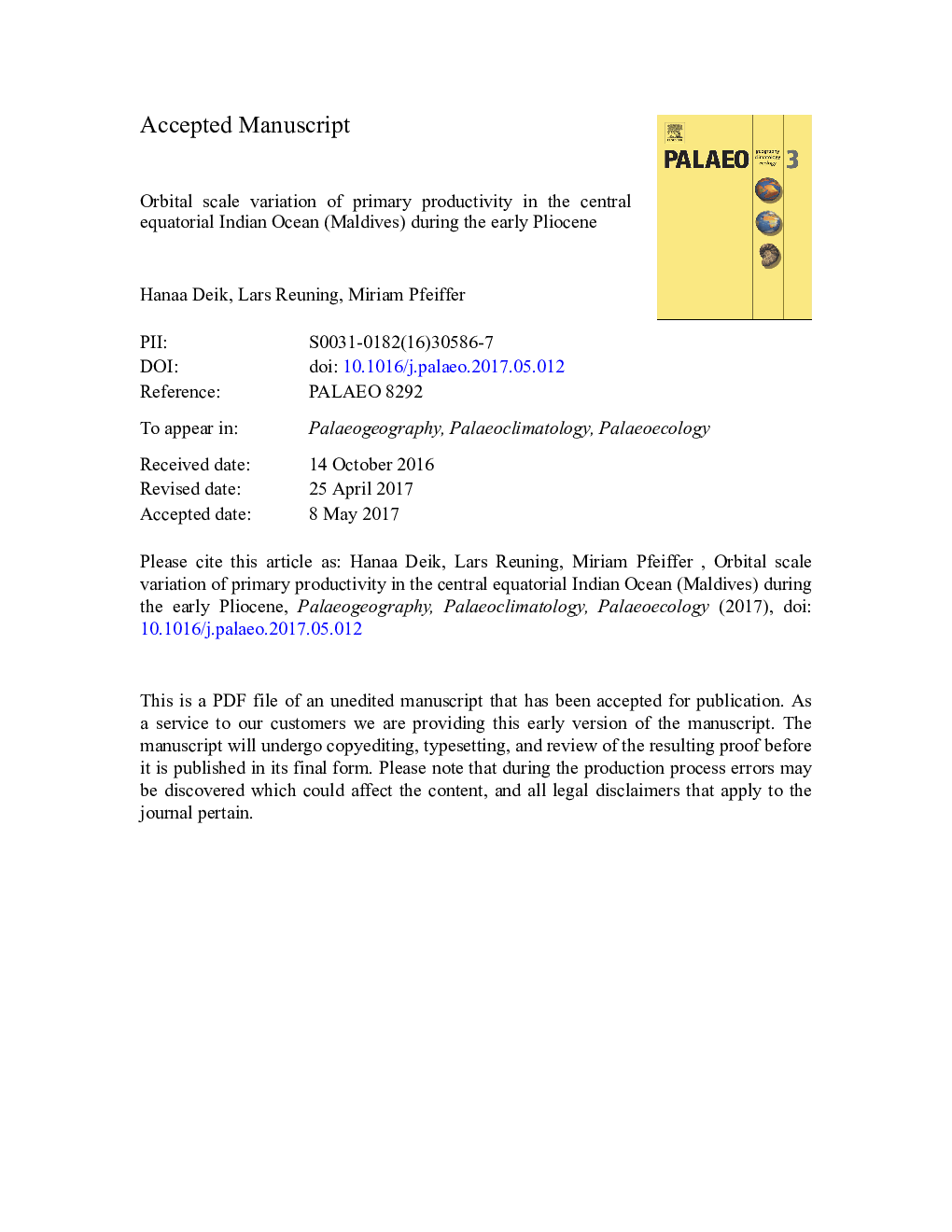| کد مقاله | کد نشریه | سال انتشار | مقاله انگلیسی | نسخه تمام متن |
|---|---|---|---|---|
| 5755628 | 1622112 | 2017 | 43 صفحه PDF | دانلود رایگان |
عنوان انگلیسی مقاله ISI
Orbital scale variation of primary productivity in the central equatorial Indian Ocean (Maldives) during the early Pliocene
ترجمه فارسی عنوان
تنوع مقیاس در مقیاس ارزیابی بهره وری اولیه در اقیانوس هند شرقی استوایی (مالدیو) در اوایل پیلوسان
دانلود مقاله + سفارش ترجمه
دانلود مقاله ISI انگلیسی
رایگان برای ایرانیان
کلمات کلیدی
موضوعات مرتبط
مهندسی و علوم پایه
علوم زمین و سیارات
فرآیندهای سطح زمین
چکیده انگلیسی
We investigate the response of the central equatorial Indian Ocean (ODP Site 716, Maldives) upwelling system to orbital forcing between 3.64 and 4.19Â Ma. This time interval in the early Pliocene was characterized by global average temperatures considerably warmer than present and reduced zonal and meridional sea surface temperature gradients across the major oceans. Chlorin, a degradation product of chlorophyll and a potential indicator of primary productivity, was previously shown to record orbital scale variations at this site. To confirm that chlorin records primary productivity and to understand the mechanism controlling the orbital variations, we compare changes in the planktic foraminiferal assemblages with the chlorin content of the sediment. Cross wavelet analysis demonstrates the in-phase relationship between the abundance of thermocline species and chlorin content, indicating that upwelling and a shallower thermocline drive the productivity changes. The aragonite content in periplatform carbonates is known to reflect variations in sea-level and/or climate, with high values generally indicating sea-level highstands. The aragonite content in the studied interval shows precession and eccentricity astronomical cycles, whereas the primary productivity proxies show only precessional cycles. The negative correlation between aragonite content and the relative abundance of thermocline species on the precessional band implies that the primary productivity increased during sea-level lowstands. This phase coupling is consistent with Quaternary productivity records from the central Indian Ocean that were proposed to be controlled by orbital induced variations of the El Niño-Southern Oscillation (ENSO). We therefore propose that a similar mechanism was active in the early Pliocene despite major changes in the global boundary conditions.
ناشر
Database: Elsevier - ScienceDirect (ساینس دایرکت)
Journal: Palaeogeography, Palaeoclimatology, Palaeoecology - Volume 480, 15 August 2017, Pages 33-41
Journal: Palaeogeography, Palaeoclimatology, Palaeoecology - Volume 480, 15 August 2017, Pages 33-41
نویسندگان
Hanaa Deik, Lars Reuning, Miriam Pfeiffer,
